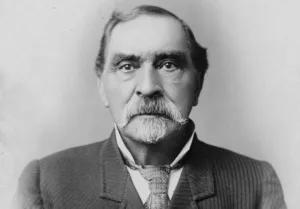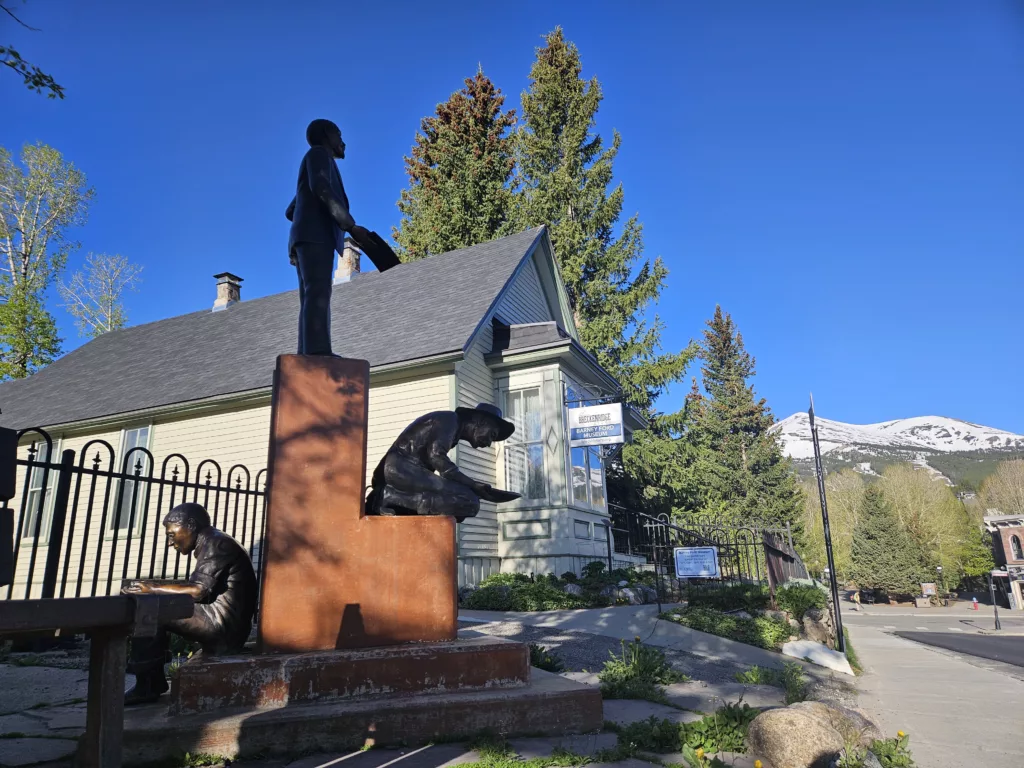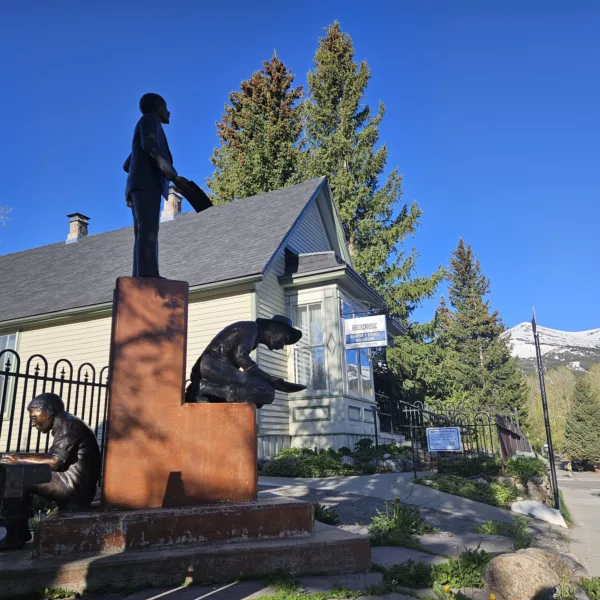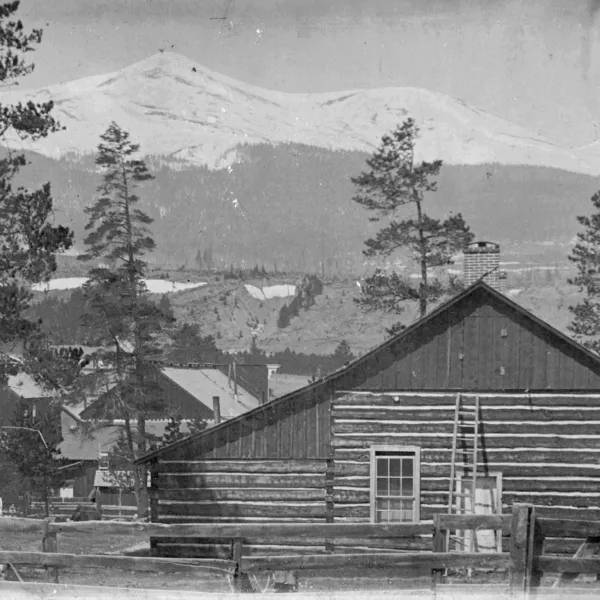Barney Ford’s Legacy Honored with National Recognition
June 21, 2025 | Category: Making History Happen
Breckenridge museum joins the National Underground Railroad Network to Freedom as new educational series begins July 3
The story of Barney Ford — a formerly enslaved man who rose to prominence as an entrepreneur, civil rights leader, and political trailblazer in the late 1800s — has long been a part of Breckenridge’s historical fabric, commemorated through a museum in his former home on Main Street.
In recognition of Ford’s remarkable legacy and his connection to the fight for freedom, the Barney Ford Museum was recently added to the National Park Service’s National Underground Railroad Network to Freedom. This designation recognizes our efforts to preserve and share Ford’s story for future generations, joining more than 800 sites, facilities and programs that illuminate the stories of those who escaped slavery and the allies who aided them.
“This listing underscores Ford’s impact not just locally or in the West, but also on a national level,” said Larissa O’Neil, executive director of Breckenridge History. “It recognizes the full scope of Ford’s efforts to help others who were seeking freedom.”
The Barney Ford Museum is only the second site from the state of Colorado to be listed in the network, and one of 31 sites chosen from around the country this year.
Created by Congress in 1998, the network includes sites in 41 states, Washington, D.C., Canada, and the U.S. Virgin Islands. Through its mission to “honor, preserve and promote the history of resistance to enslavement through escape and flight,” the Network to Freedom works to inspire people worldwide.
“We’re so fortunate to have Ford’s Breckenridge home where he spent close to a decade of his life,” O’Neil added. “His story and the museum highlight themes of resilience and equality — values that remain relevant in our community and beyond.”
Leigh Girvin, a local historian who prepared the application for the National Park Service designation, said the Barney Ford Museum is the only location where guests can learn from professional docents about Ford’s involvement with emancipation activities.
“People don’t typically think of Colorado as part of the Underground Railroad, and while Ford’s house in Breckenridge wasn’t part of the Underground Railroad, it was the longtime home of Barney Ford, who had significant influence in Chicago’s freedom activities,” she said.
To honor this milestone, we will launch a new educational series on July 3 — on the eve of the nation’s Independence Day. “The Eves of History” will celebrate Ford’s life and the broader significance of his journey to freedom. From 6–8 p.m., explore the museums in the twilight hours with one-night-only displays and activities for the whole family.
This series will continue Aug. 15 from 6–8 p.m. at the Breckenridge Welcome Center Museum.
The Story of Barney Ford
 Born into slavery in 1822 in Virginia, Ford was was raised on a plantation in South Carolina and spent his years in enslavement moving hogs and mules from Kentucky to Georgia on foot before working on a cotton boat and passenger steamboats.
Born into slavery in 1822 in Virginia, Ford was was raised on a plantation in South Carolina and spent his years in enslavement moving hogs and mules from Kentucky to Georgia on foot before working on a cotton boat and passenger steamboats.
Ford fled to his freedom in 1848, likely traveling the Underground Railroad to reach Chicago. While he was initially regarded as a fugitive, records show that by 1850 he was legally recognized as a free man after his former enslaver granted him freedom in his will.
In Chicago, Ford met Henry O. Wagoner, and the pair were heavily involved in civil rights activism and the Underground Railroad. It was here he also met and married Wagoner’s sister-in-law, Julia Lyons.
According to Wagoner’s 1901 obituary in the Rocky Mountain News, his mill was part of the Underground Railroad, and it was highly likely the pair worked together to help others achieve their freedom.
Ford was the co-founder of the Chicago Vigilance Committee, which was formed in response to the passage of the Fugitive Slave Law of 1850, which required the return of escaped enslaved people to their enslavers, even if they were found in free states.
“The Vigilance Committee stood in opposition to the law’s edict,” Girvin said. “Black citizens of Chicago established regular patrols to watch for and confront slave-catchers. They raised funds for the legal defense of those who had been captured and were at risk of being sold into slavery in the south. And they endeavored to end slavery.”
After a stint owning a hotel in Nicaragua, Ford returned to Chicago and operated multiple businesses, including a barber shop, candy shop, and livery stable and boarding house. In 1860, Ford traveled west in search of gold, eventually opening businesses in both the Breckenridge area and Denver. His pursuit to obtain voting rights for Black citizens in Colorado is documented in our museum.
Ford found success in Breckenridge with the opening of a restaurant in 1879, as Ford’s reputation as a restaurateur preceded him.
“Just as a James Beard award-winning chef makes the news today, Breckenridge newspapers talked about Ford’s restaurants and his catering gigs,” Girvin said.
By 1882, Ford had built his home where the Barney Ford Museum stands today.
“The house remains significant because it is very true to the original that Barney and Julia built,” Girvin said. “Unlike so many historic homes in Breckenridge, it has not been altered much. Guests can get a good feel for an upscale Victorian-era home that captures what life in Breckenridge might have been like in those days.”
It was also in Breckenridge when Ford made a fortune in mining by purchasing an interest in the Oro Mine and selling it two years later for a $20,000 profit.
Upon Ford’s passing in 1902, he was hailed in local newspapers as “a man of the highest moral sense, possessed of great tact…modest in manner… intelligent beyond most men.”
See more of Ford’s story on display within the Barney Ford Museum located at 111 E. Washington Ave. in the Breckenridge Historic District.
-Written by Heather Jarvis





